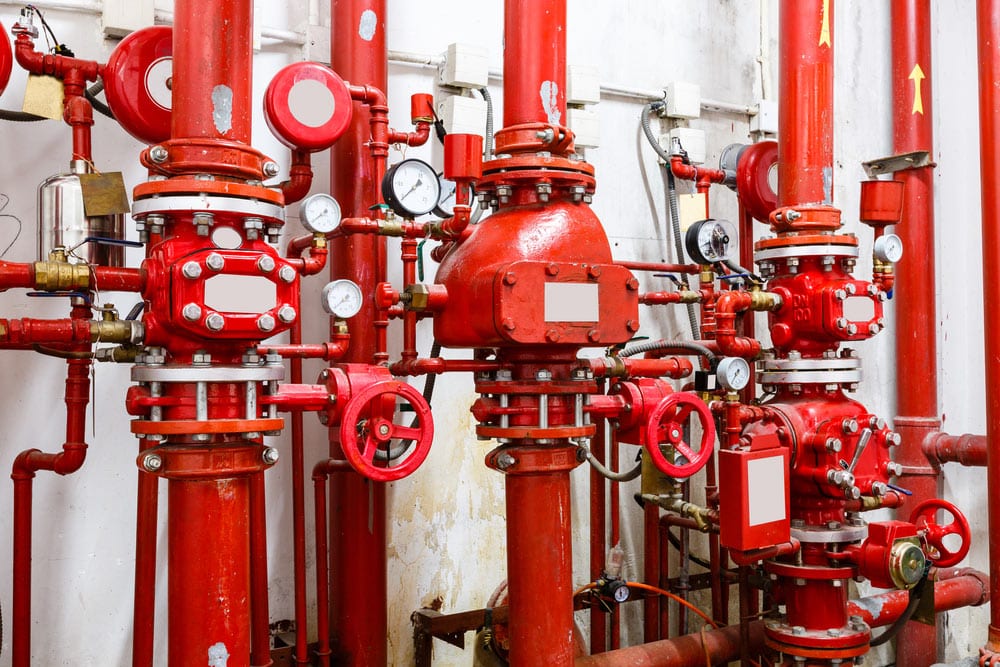Fire pumps are essential components of water-based fire protection systems, often acting to increase pressure (measured in pounds per square inch and bars) from an existing water source when an extra surge is necessary to operate effectively.
Electric fire pumps are by far the most commonly utilized option, making them perfect for buildings located in urban environments where electricity can be reliably supplied and backup generators are accessible.
They Pump Water
Fire pumps create water pressure to supply systems like sprinklers and hydrants, water mist systems, and foam systems, among others. Proper installation and maintenance are crucial to ensure reliable operation during an emergency – failing which could result in loss of both lives and property.
Fire pump systems typically consist of the fire pump itself, an electric motor, controller and water source. This water source may come from either an external reservoir designed to store it for this purpose or even have its own internal tank to provide freshwater for use within the system.
Fire pump motors, or drivers, may either be electric motors or diesel engines. Diesel engines tend to be preferable due to not relying on electrical power sources – making them ideal for locations without backup generators or experiencing frequent power outages.
Fire pumps should be tested periodically to ensure optimal operation during emergencies. This involves making sure they produce water at an adequate pressure and flow rate, reaching full operational capacity within 10 minutes churn test, as well as verifying gauges and meters are calibrated accurately for accurate readings.
They Suppress Fire
Fire pumps play an essential part in ensuring water-based fire suppression systems operate effectively, helping increase pressure from an water source when supply doesn’t meet system demands. Such pumps are widely found across buildings such as office towers and large storage warehouses where stringent safety regulations must be observed.
Koorsen provides its technicians with extensive in-house training on fire pump design, installation, testing, maintenance and repair; our service technicians can quickly identify any potential problems and address them efficiently.
A building’s fire pump needs are determined by the total demands of its fire protection systems, with fire water needs measured throughout and compared against design requirements to ensure that enough supply will be available during an event. To determine this, measuring fire water demand at various points within a building and comparing against design requirements yields an ideal system to meet such demand during an incident.
Fire pumps employ three drivers to accomplish their purpose: an electrical motor, diesel engine or steam. Electric motors are most often utilized and are described in NFPA 20 Chapter 9. Electric motors use electricity to turn an impeller shaft that then provides water into the fire suppression system – these motors and impellers must also be appropriately sized to ensure optimal performance.
They Relieve Pressure
Fire safety is of utmost importance in industrial operations, where flammable materials and complex machinery pose hazards to people and property. Fire suppression systems like sprinklers and standpipes play a key role in protecting people and property while fire pumps with controllers provide adequate water pressure needed for these systems to function effectively.
Fire pumps are installed in high-rise buildings or other structures where the building’s normal water supply cannot provide sufficient pressure for fire suppression systems like sprinklers, standpipes and hydrants. They connect to a reliable water source such as municipal supply or dedicated tank. Once in the pump’s inlet pipe it is then discharged under high pressure through a discharge pipe system to the building’s fire suppression systems.
Pumps can typically be powered by either an electric motor or diesel engine; multistage (two-port) fire pumps use electric motors to power multiple impellers within one pump casing while single impeller diesel fire pumps utilize an internal diesel engine as their sole power source. Fire pumps must undergo regular maintenance in order to be ready and operational during an emergency; an annual test program includes flow and pressure tests designed to confirm they’re performing according to their manufacturer’s test curve.
They Require Maintenance
Fire pumps only function properly if properly maintained by fire safety professionals. Property owners and managers should make sure to get regular checks of their fire pumps from experts to ensure optimal performance.
An effective fire pump creates high water pressure that is used to power sprinkler systems, hose reels, and other fire fighting applications. It connects to an approved source such as municipal water supplies or storage tanks; then its impellers rotate to generate centrifugal force and draw water inward through centrifugal force before an hydraulic motor driver converts this energy into kinetic energy for use by fire suppression systems.
Regular tests ensure a fire pump can fulfill its vital role during an emergency situation. These include no-flow tests – wherein no water flows through – as well as full capacity flow tests performed monthly.
Ongoing maintenance should also include checking that mechanical components are appropriately lubricated to reduce friction or damage and protect older systems that use mechanical parts. In addition, testing the fire pump system’s backup power sources (such as diesel engines or generators) to make sure that they’re functioning effectively should there be an outage or another emergency arises is a necessity.

